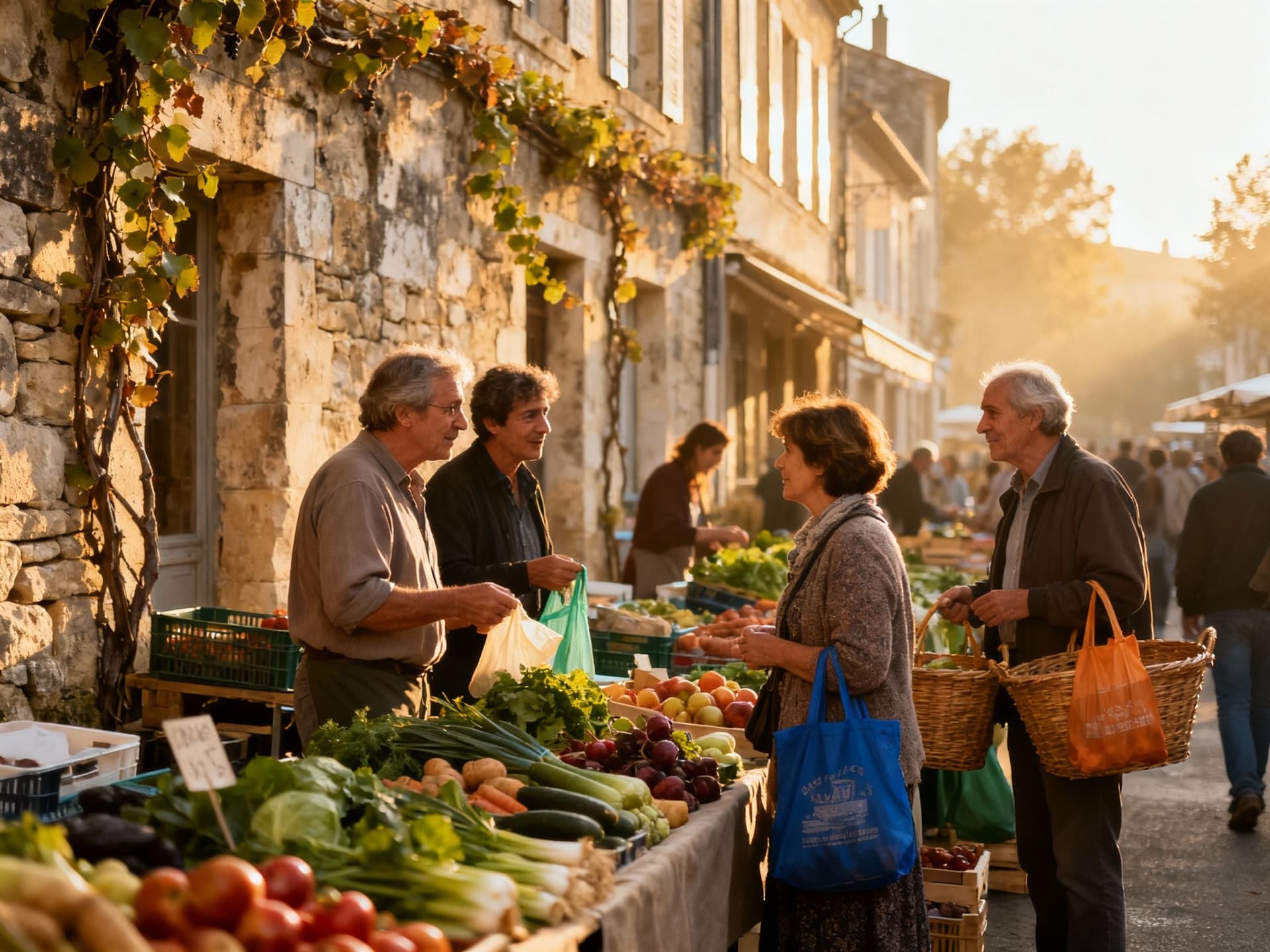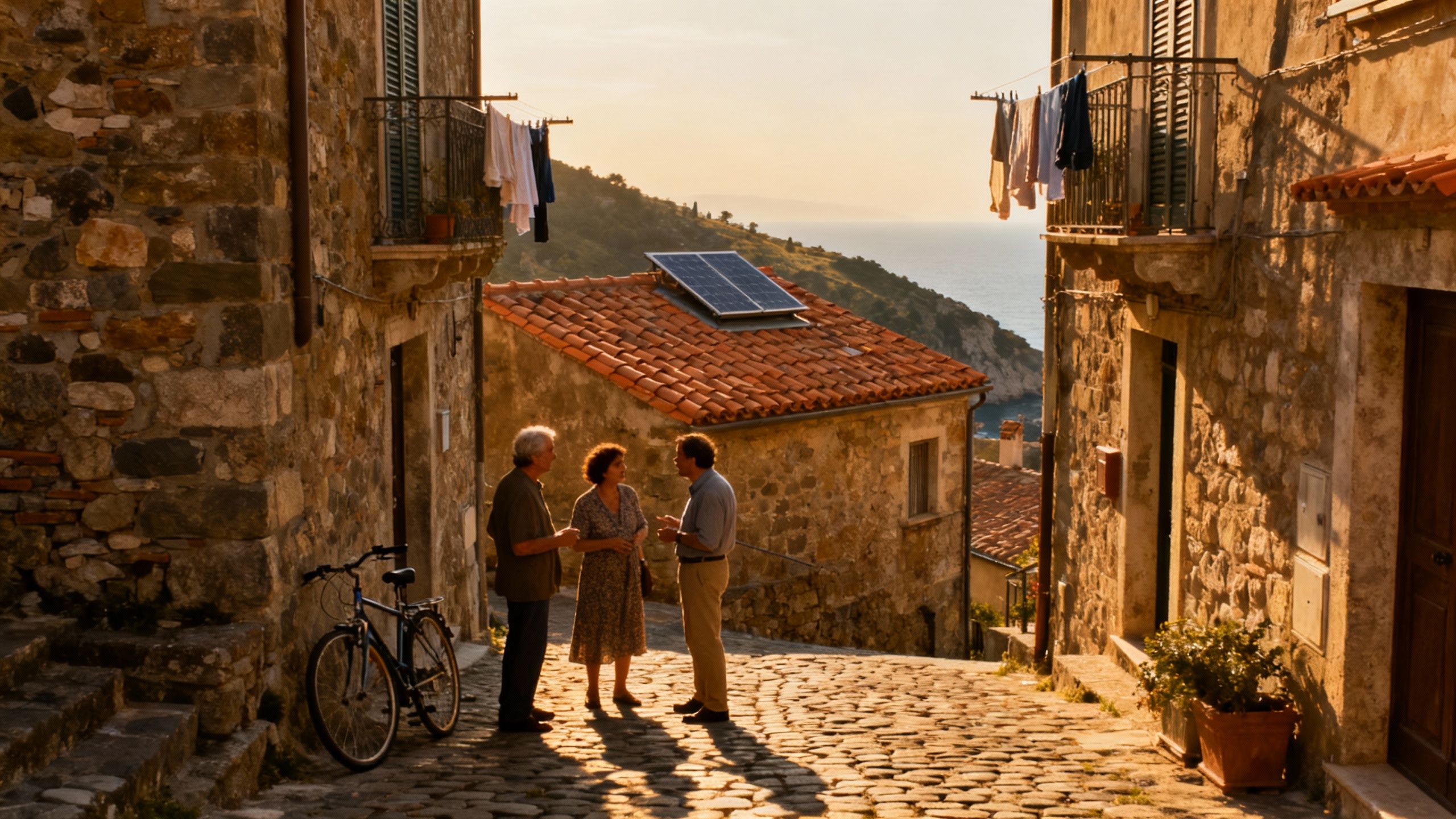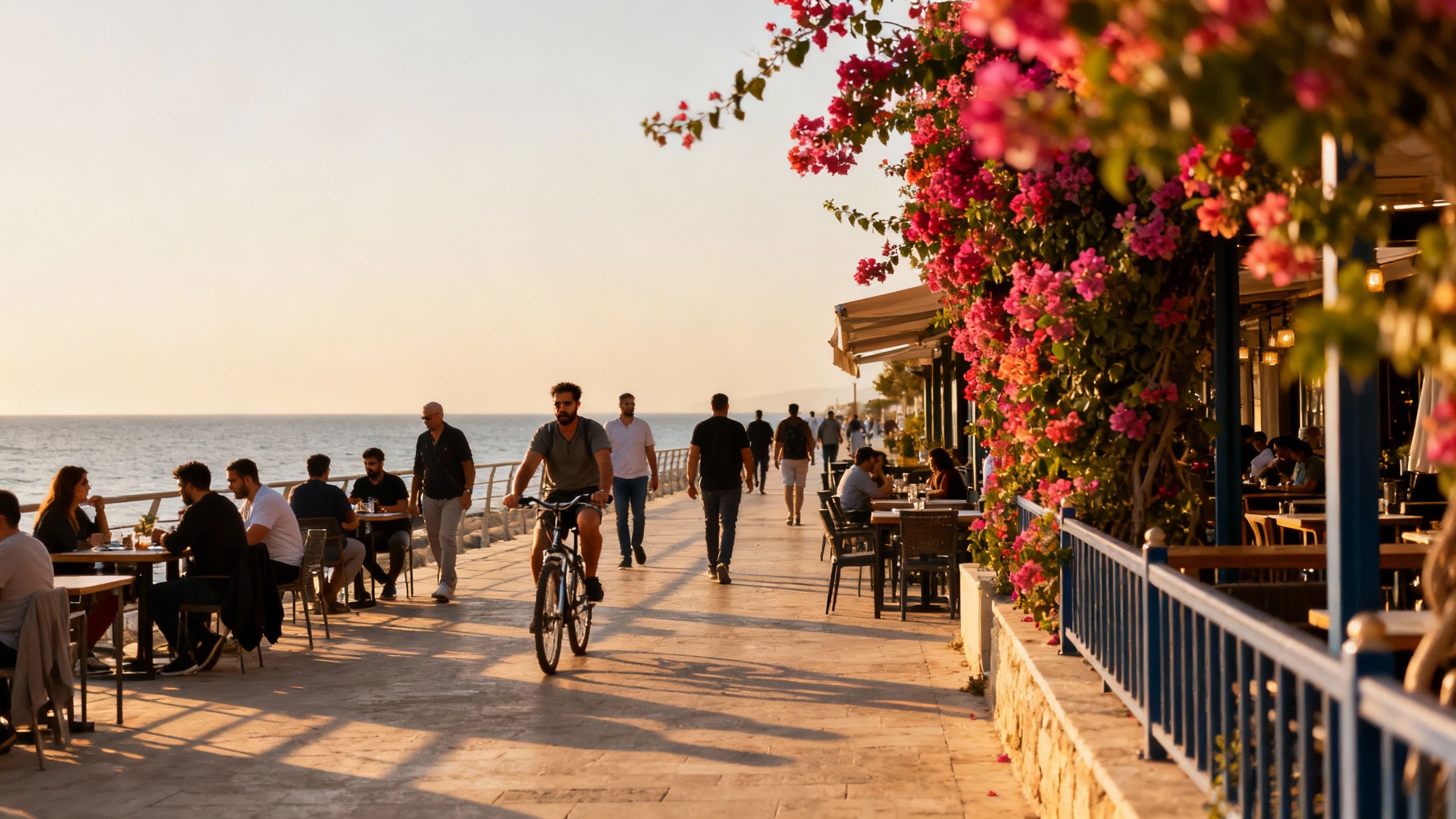Where France’s Green Grid Meets Everyday Life
France pairs market-square rhythms with growing renewables: choose regions where solar, wind and community projects lower bills and deepen the daily life you love.
Imagine waking to the smell of warm croissants, stepping onto a terrazzo balcony framed by climbing roses and solar tiles, and hearing—above the distant church bell—the soft hum of a grid increasingly fed by wind on the coast and sun across inland fields. In France, the romance of market squares, boulangeries and slow summer evenings now coexists with wind farms on ridgelines and village halls powered by community solar. For international buyers drawn to sustainability, that marriage of lived experience and green infrastructure changes everything: lifestyle is no longer separate from the means of living sustainably. This piece peels back assumptions about price, place and practicality to show where green infrastructure actually enhances quality of life — and how to translate that into a confident property move in France.
Living the France lifestyle: nature, markets and a greener grid

France’s electricity story is quietly evolving: nuclear remains dominant, but renewables — notably hydro, wind and solar — now provide a meaningful and growing share of the mix. That shift is visible in daily life: village halls with solar canopies, vineyards using battery storage for frost protection, and coastal towns feeding local pumps with wind. For a buyer, this means choosing a home is also choosing an edge in resilience and lower running costs, especially where local distribution and community projects are mature. Recent reporting shows renewables provided nearly 28% of France’s power in 2024, a useful datapoint when imagining life powered more by weather than fuel bills.
Spotlight: Provence-Alpes-Côte d’Azur and Occitanie — sun, vineyards and solar
Drive through Provence at noon and the ceramic rooftops are punctuated with solar panels; in Occitanie, wide agricultural roofs and former quarries host arrays that feel woven into the landscape. These regions mix Mediterranean light with a long tradition of small-scale agriculture, which makes rooftop and agrivoltaic projects both practical and community-friendly. For buyers dreaming of a sun-drenched kitchen and energy autonomy, properties here often pair thick stone walls and high ceilings with sunlight-heavy, low-tech renewable systems. It’s the kind of life where weekday market runs, evening pétanque and a low-carbon hot water system coexist naturally.
Spotlight: Brittany and Nouvelle-Aquitaine — wind, coast and resilient towns
On the Atlantic edge, wind farms are part of the skyline and small towns invest in micro-grid upgrades to manage seasonality in tourism and fishing. Want a seaside apartment with low bills? Look for communes that participate in regional renewable programs or offer subsidised retrofits for insulation and heat pumps. Local life here is weather-led: salted air, markets with shellfish and short, intense summers; green infrastructure tends to be practical and community-minded. For international buyers, that means seeking neighborhoods where local councils actively reinvest renewable revenues into public services and coastal resilience.
- Lifestyle highlights to look for when you prioritise green infrastructure
- Village markets that double as social grids — mornings at Marché des Lices in Rennes or Nice’s Cours Saleya feel rooted and sustainable
- Neighbourhoods with community solar or co-op energy schemes — they lower bills and build local ties
Making the move: real property choices tuned to green living
Dreams of rural tranquillity or a coastal apartment meet practical markets governed by slow shifts in price and demand. National statistics show prices stabilising into late 2024, which gives international buyers breathing room to prioritise features like energy performance rather than rushing for perceived bargains. That breathing room matters: investing a little more in an A- or B‑rated property, or in a well-insulated renovation, often pays off in comfort, lower running costs and resale appeal in France’s increasingly eco-aware market. Think of purchase price as start-up capital for a greener life, not the whole story.
Property styles and how they support sustainable living
Stone farmhouses with thick walls keep summers cool and pair beautifully with discreet solar; contemporary new builds offer integrated heat pumps, mechanical ventilation and solar-ready roofs. If you crave indoor-outdoor living, look for properties with south-facing courtyards, pergolas and mature trees that reduce cooling needs naturally. Renovation projects in rural communes often come with local incentives for insulation and low-carbon heating, so a sympathetic restoration can be both charming and efficient. Align the property typology with the life you imagine — a restored mas in Languedoc for orchard mornings, or a low-rise apartment in Nantes for market weekends — and measure embodied energy in materials as well as monthly bills.
Working with local experts who know green infrastructure
The right agency is more than a transactional partner — it’s a translator of place, policy and practical green know-how. Look for agents who can point to recent local retrofit projects, community energy schemes, and installers rather than only glossy listings. They should be able to connect you with an architect familiar with heritage rules, a solar installer who knows the municipality permitting rhythm, and a notaire who understands cross-border tax timing. Those local relationships convert lifestyle promises into real, durable outcomes for international buyers.
- Steps to marry lifestyle with green practicality when buying in France
- Visit in a shoulder season — spring or autumn reveal energy performance in real conditions (heating needs, damp, sun exposure).
- Ask the seller for EPC (Diagnostic de Performance Énergétique) and recent utility bills, and verify rooftop orientation for solar potential.
Insider knowledge: what expats wish they’d known
Practical green living in France is full of small surprises: afternoon markets that close for two hours, municipal grants that cover insulation but require paperwork, and grid quirks when winds and sun produce plenty of power mid-day but demand spikes at dusk. Some communities have experienced negative price events during overproduction, a reminder that storage and demand management matter as much as panels and turbines. Expats tell us the best early move is curiosity: ask neighbours about their winter bills, and learn which local associations run energy cooperatives. Those conversations reveal far more than glossy listing photos.
Cultural integration: language, markets and community energy
Joining a village in France often means joining a rhythm — market day, association meetings, and shared festivals — which become practical touchpoints for green living. Learn a few phrases, attend a conseil municipal meeting or pop into the local mairie to ask about renewable projects; these are the places decisions are taken and subsidies explained. Expats who engage locally find faster solutions to renovation permits and better contractor recommendations, and they often discover cooperative schemes that cut costs. Community, not just infrastructure, sustains a greener life in France.
Long-term view: how a greener home changes life over five years
In five years, a well-chosen property in a region investing in renewables will likely offer more stable energy costs, a stronger community network and better resale appeal to eco-motivated buyers. Think of upgrades—insulation, heat pumps, smart meters—as investments in daily comfort: quieter homes, warmer winters and cooler summers. For international buyers, this translates into fewer surprises when you live there and clearer options if you later rent or sell. The small, sustainable habits baked into daily life—market shopping, local composting, shared EV chargers—add up to a profoundly different pace and quality of life.
France offers a life that blends sensory pleasures with real, measurable progress on green infrastructure. If you feel the pull of mornings at market stalls, the hush of chestnut woods and the practical comfort of a well-insulated home powered in part by sun and wind, start with a local visit timed for shoulder season, bring questions about energy performance, and ask agencies for recent retrofit examples. Moss & Hearth partners know these neighbourhood stories — the café where the owner switched to a heat pump, the village that installed community solar — and can help you match a lifestyle to a property that actually performs. Book that visit, and let the place reveal itself slowly; the best moves in France happen when you fall in love first and check the technicals second.
Danish relocation specialist who moved from Copenhagen to the Algarve; supports families with seamless transitions, local partnerships, and mindful purchases.


